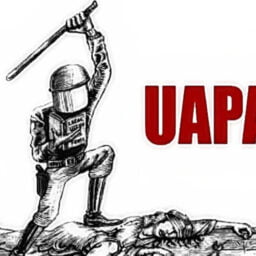INDIA EU TRADE RELATIONS – BACKCLOTH
As of 2020, the European Union (EU/ the Union) is India’s third-largest trading partner, accounting for €62.8 billion in product trade, or 11.1% of overall trade. Commerce between the Union and India in services was worth $32.7 billion in 2020. In the recent decade, the EU has become India’s top foreign investor, with its share of foreign investment inflows quadrupling from 8% to 18%.[1] In India, about 6,000 European companies are operating, supporting approximately 2 million direct jobs as well as 5 million indirect employments in numerous industries.[2] It is imperative of the EU objective in its trade ties with India that European firms trading with India or while investing in India have a substantial, transpicuous, unbarred, non-discriminatory, and inevitable business climate, including the preservation of their intellectual property. In 1994, the Union and India signed a Cooperation and Partnership Agreement, which created the EU-India Trade Sub-Commission accompanying specialized working groups wherein India’s equitable retail access and predictable investment conditions are guaranteed by the Union through all possible channels.
Providing long-term assistance to India is said to be a natural role for the EU. An EU Joint Communication embarked the EU’s prospect for boosting collaboration and partnership with India was signed by the European Commission and the EU’s High Representative for Foreign Affairs and Security Policy. A Strategic Partnership Agreement with India was to be explored by the EU to update the EU-India Cooperation Agreement entered upon in the year 1994, states the Joint Communication[3]. During a summit that took place on May 8, 2021, the Union and Indian representatives acknowledged to restart conclave on a “balanced, ambitious, comprehensive, and mutually beneficial” trade agreement, in addition, both the parties would begin separate talks on an investment protection pact. The leaders also decided to form an advisory body to discuss regulatory cooperation and to hold a conversation on WTO problems[4].
PROGRESS STATUS OF EU-INDIA TRADE TALKS
When the India-EU summit was held in the month of May of the year 2021, both the parties agreed to recommence BTIA talks, which had been frozen since 2013. The two sides also endorsed a Connectivity Partnership document, touching on their plans to cooperate on digital and infrastructure projects[5]. The early harvest negotiations began on November 1, with both sides intending to conclude a deal by that date. Also, a trade agreement between India and the United Kingdom should be signed by March 2022, paving the way for a larger deal later on. Due to disagreements over labour, the environment, investments, and unresolved previous differences, preparations for the EU to resume bilateral free trade negotiations by the climax of the year have been slowed down.[6]
THE BTIA AGREEMENT & SCOPE OF TRADE
During a meeting held in Brussels, Belgium, on June 28, 2007, India and the EU began negotiating on the BTIA. During the 7th Summit uniting the Union and India held in Helsinki on October 13, 2006, political leaders committed to moving ahead with discussions for a comprehensive trade, commerce and investment agreement based on the findings in the transcripts of the India-EU High-Level Technical Group. In order to remove trade barriers to services and financing across all the spheres of the economy to promote bilateral cooperation, India and the EU intend to reduce or abolish tariffs, import quotas, export restrictions, and other trade barriers. There are many aspects of commodities, services, and investment commerce covered in the BTIA. Negotiations stalled after the last round of talks in November 2013. The BTIA, renegotiated in 2021, could be affected by recent events, including Brexit and the cancellation of other overseas investment treaties.[7]
Free movement of persons has been a key demand of India in the final BTIA deal. In particular, India is engrossed in the goal of liberalization of service trade under GATS Modes I and IV and specifically prioritizes stronger access to the market for services over products as a result of its rapid expansion in the professional services sector.[8] Further, India’s ITeS companies are enraged that the EU continues to deny its data security status, causing concerns over private individuals’ data dispensed with Indian ITeS firms and severely restricting their business opportunities in Europe. Consequently, India’s Intellectual Property Rights framework is further a roadblock in the Union’s plan to move and explore beyond that which was agreed upon at the WTO. Creating generic formulations, which is an essential component of India’s economic growth, maybe compromised by any promises made outside the WTO’s intellectual property regulations[9]. Furthermore, the EU has urged India to liberalize its Mode III services, including FDI in multi-brand retail and insurance. Standardization and mutual acceptance of licensing requirements are other non-tariff barriers that India looks at. Several Indian companies accuse the European Union of casting reliance on terms like human rights as barriers to imports, and that these are being used more and more frequently.
IMPEDIMENTS
Furthermore, to lower import duties, the Europeans wanted India to open up its financial services and public procurement industries. Meanwhile, India wants the EU to pacify the movement of its citizens around the European Union. According to the EU, visas are the responsibility of national governments, not the Union, so has refused to give in to Indian demands for data security and easier access to EU borders for Indian professionals.
Discussions at several levels and distinguished meetings have collapsed to resolve these issues, and the arrangement seems dormant in the same place it was when it first ran into obstacles. During the global financial crisis of 2008, which exacerbated India’s and the EU’s internal struggles, the two sides faced greater obstacles in discussing and reaching an agreement. The talks have been stalled since 2013, when the EU demanded broader access for vehicles, alcohol, as well as further unwrapping of the monetary and economic services sector, including banking, insurance, and e-commerce[10]. As a result of the COVID-19 dilemma, the Make in India programme has accelerated, and the recent declarations state that India wants to become self-sufficient has aggravated matters.
RENEGOTIATION INITIATIVES
Throughout the Connectivity Partnership document, both sides agreed to work together to establish a comprehensive system of connectivity that encompasses not only physical infrastructure but also digital, energy, transportation, and people-to-people connectivity. Commerce, trade and investment, research, and mechanization along with the Sustainable Development Goals (SDG) all encompass the roadmap for India-EU connectivity objective. ‘The Partnership for Development, Demand, and Democracy’ emphasizes that China’s Belt and Road Initiative (BRI) is being undermined through the connectivity road map.
The EU’s Executive Vice-President and Trade Commissioner, Valdis Dombrovskis, held the first High-Level Dialogue (HLD) in which both the parties concurred to reach an agreement on a wide range of bilateral trade and investment issues. As a result of the two parties’ agreement after the India-EU Leader’s Summit, BTIA talks will be resumed and the HLD will be formed.[11]
CONCLUSION
There has been no progress on a free trade agreement between the two parties since 2007. Thus, both India and Europe should work toward completing the trade agreement as earlier as feasible to achieve greater alignment. In a geo-economic sense, India, if not in a security sense, could entice EU countries to participate in the Indo-Pacific narrative. After withdrawing from Regional Comprehensive Economic Partnership (RCEP) at the last gasp in an extreme step, India wants to convey a word that it means business is unfastened to signing trade accords. In contrast, the EU is interested in diversifying its value chain away from China and toward India, as a result of why it wants a trade agreement with India.[12]
Author(s) Name: Aathira Pillai (University of Mumbai)
References:
[1] Ec.europa.eu N.D. India – Trade – European Commission, <https://ec.europa.eu/trade/policy/countries-and-regions/countries/india/> Accessed 15 December 2021.
[2] Ibid.
[3] European Union- European Commission (2018) EU shapes its ambitious strategy on India <https://ec.europa.eu/commission/presscorner/detail/en/IP_18_6481> Accessed 15 December 2021.
[4] Supra 1.
[5] The Hindu. (2021) India-EU trade talks to resume by December <https://www.thehindu.com/news/national/india-eu-trade-talks-to-resume-by-december/article37221354.ece> Accessed 15 December 2021.
[6] Business Line (2021) India-EU free trade talks hit slow lane over labour, environment, investment issues. <https://www.thehindubusinessline.com/economy/india-eu-free-trade-talks-hit-slow-lane-over-labour-environment-investment-issues/article37913398.ece> Accessed 16 December 2021.
[7] BYJUS Broad-based Trade and Investment Agreement (BTIA): Definition, Scenario and Conclusion. <https://byjus.com/free-ias-prep/india-eu-btia/> Accessed 16 December 2021.
[8] Nayar, R., 2021, Broad-based Trade & Investment Agreement (BTIA) – Media India Group. <https://mediaindia.eu/trade/broad-based-trade-investment-agreement-btia-dark-clouds-bury-silver-lining/> Accessed 16 December 2021.
[9] Ibid.
[10] Drishti IAS, N.D., Renegotiation of BTIA: India-EU <https://www.drishtiias.com/daily-updates/daily-news-analysis/renegotiation-of-btia-india-eu> Accessed 16 December 2021.
[11] Suneja, K., 2021. India, EU talk restarting bilateral trade, investment pact with interim agreement. [online] The Economic Times. <https://economictimes.indiatimes.com/news/economy/foreign-trade/india-eu-talk-restarting-bilateral-trade-investment-pact-with-interim-agreement/articleshow/80721605.cms> Accessed 16 December 2021.
[12] Crackit Today Affairs. 2021. Bilateral Trade and Investment Agreement (BTIA) – UPSC Notes. [online] Available at: <https://crackittoday.com/current-affairs/bilateral-trade-and-investment-agreement-btia/> [Accessed 16 December 2021].















